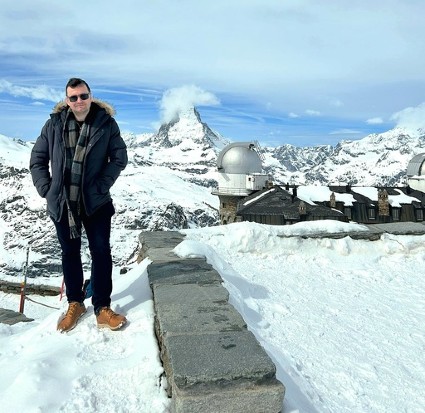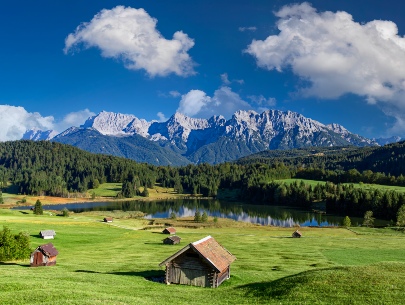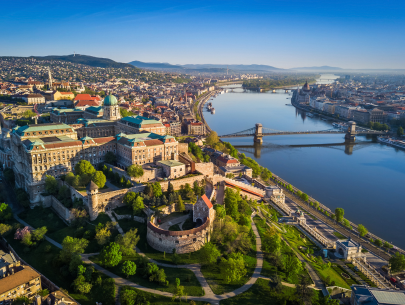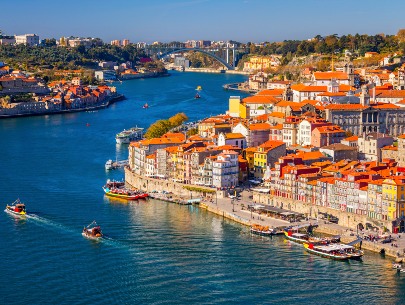Neuschwanstein is the most famous castle in Germany. Nestled in the Bavarian Alps, it’s just an hour and 40-minute drive from Munich. While it was rumored to be the inspiration for the Cinderella Castle, Disneyland representatives say this was the inspiration for the park’s Sleeping Beauty Castle. Constructed in the late 19th century, it was built as an opulent retreat for King Ludwig II of Bavaria. While it’s a bit of a walk to reach, taking 30 to 40 minutes, there are horse-drawn carriage rides as an alternative. A guided tour will bring you through the interior to explore it. Despite the king’s grand plans, just 14 rooms were finished and on view, including the king’s bedroom, the Singer’s Hall, and a cave-like grotto.
Munich is a fantastic city that should be visited on any Germany vacation. It’s legendary for Oktoberfest but the Hofbrauhaus can be visited anytime to enjoy one of those ginormous-sized brews. Visitors will also discover a wealth of sights to see within easy reach of Marienplatz, the central square, including the Old and New Town Hall. The latter boasts an over-century-old Glockenspiel with life-sized figures reenacting historic Bavarian events every day at 11 a.m. and noon. But you’ll also want to make time for some day trips from Munich. From the fairytale-like Neuschwanstein Castle nestled in the mountains to the Dachau concentration camp that provides an important if sobering look at the Holocaust horrors, these are some of the best to consider.
Neuschwanstein Castle
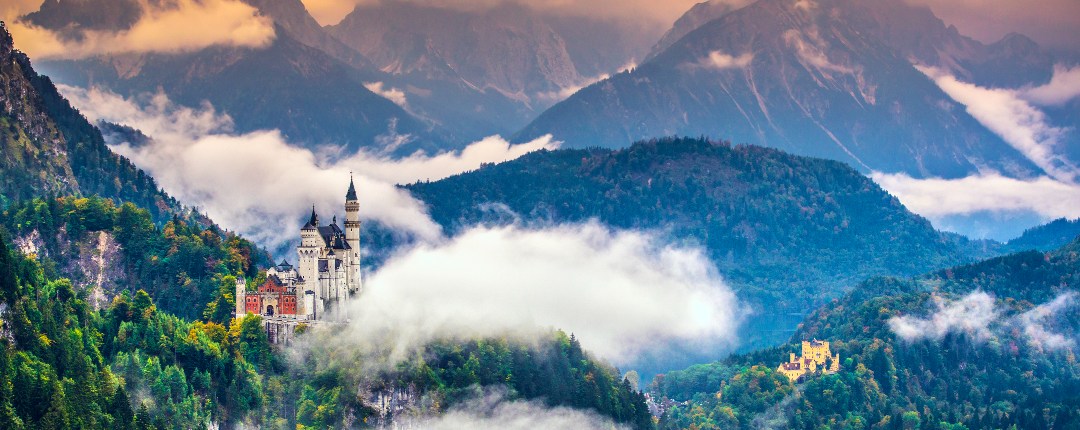
Nuremberg
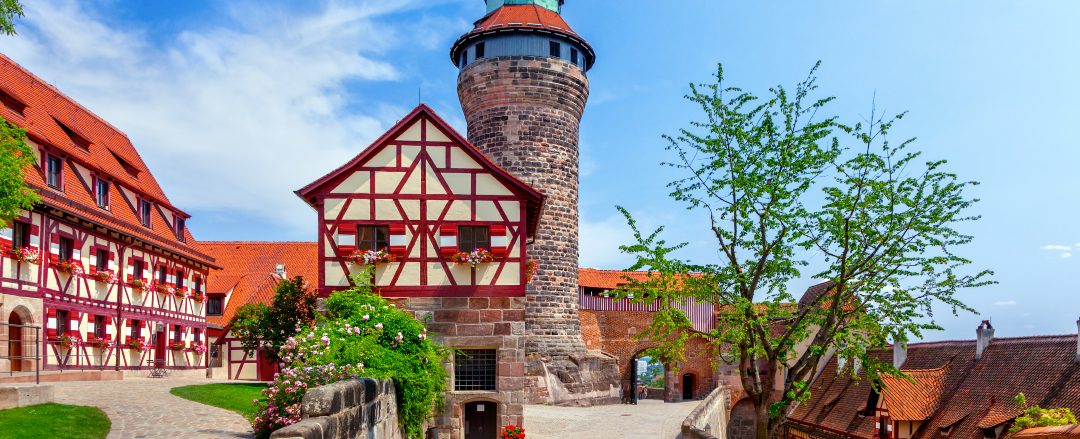
With a skyline dominated by a castle, Nuremberg is one of Germany’s most picturesque cities. Its history dates back to 1030 when Nuremberg Castle was built. Today, visitors can walk the historical mile that begins and ends with the castle, featuring elaborately decorated churches, elegant fountains, and the Tucherschloss Museum in between. The castle itself is set atop a rocky promontory, providing magnificent views of the city as well as a look at its past through self-guided tours. The market square hosts one of the country’s best Christmas markets and offers shopping year-round for local specialties like lebkuchen (German gingerbread). The city also has a dark past that can be explored in the Documentation Centre where the Nuremberg Trials took place.
Salzburg
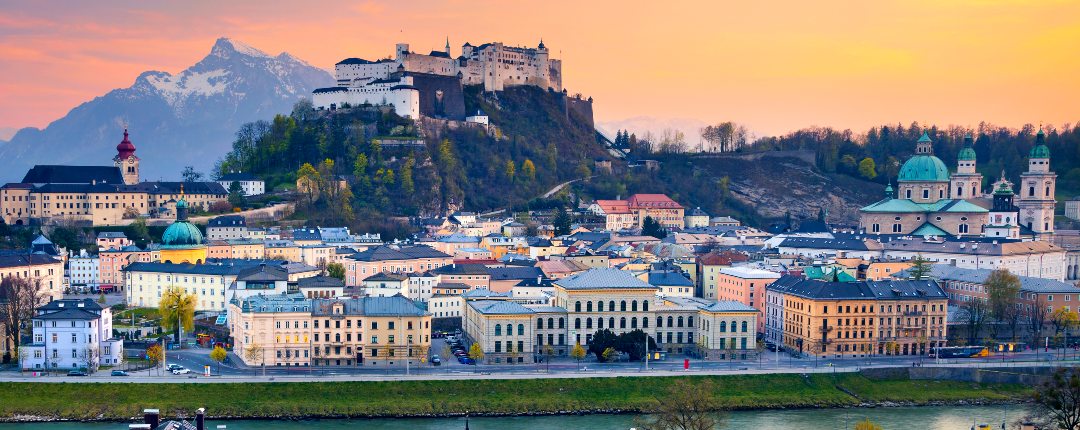
The birthplace of Mozart, Salzburg boasts a storybook Old Town that’s one of the most well-preserved of its kind north of the Alps. A UNESCO-listed site, it’s centered on the narrow pedestrianized street known as Getreidegasse which is lined with shops selling antiques and folk costumes. No matter which way you turn on the charming cobblestone streets you’ll end up on one of the famous squares with centuries-old buildings dating to the Renaissance, Baroque, Romanesque, or Middle Ages period. Some of the highlights include Hagenauer Haus, Mozart’s Birthplace which is now a museum with exhibits focused on the early life of the composer. The 7th-century Benedictine Abbey of St. Peter and the 17th-century Salzburg Cathedral are worth a look too.
Read More
Guide to Munich & BavariaLinderhof Palace
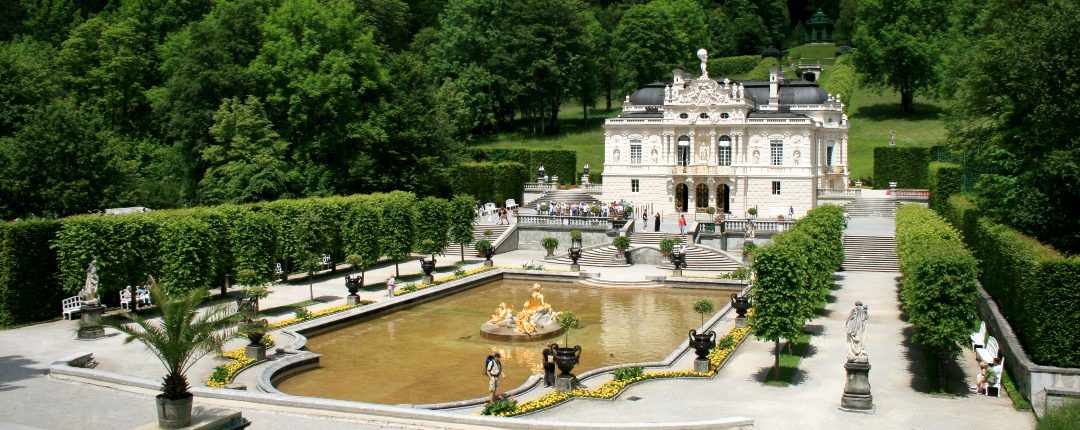
Linderhof is the smallest of the three palaces that King Ludwig II of Bavaria built. Constructed in the late 1800s, it’s also the only one that was ever completed. Just a 75-minute drive from Munich, easily doable to combine with Neuschwanstein Castle – or take a Bavaria private tour to include both. Its park-like grounds are as impressive as the interior with colorful gardens considered some of Germany’s most beautiful. There’s a perfectly manicured lawn, ornate sculptures, and incredible mountain views. You’ll need to take a guided tour to see the inside. Inspired by the French King Louis XIV and the Palace of Versailles, you’ll notice many references to the famous palace, including sun frescos, the Hall of Mirrors, and the grand Ambassador’s Staircase.
Zugspitze
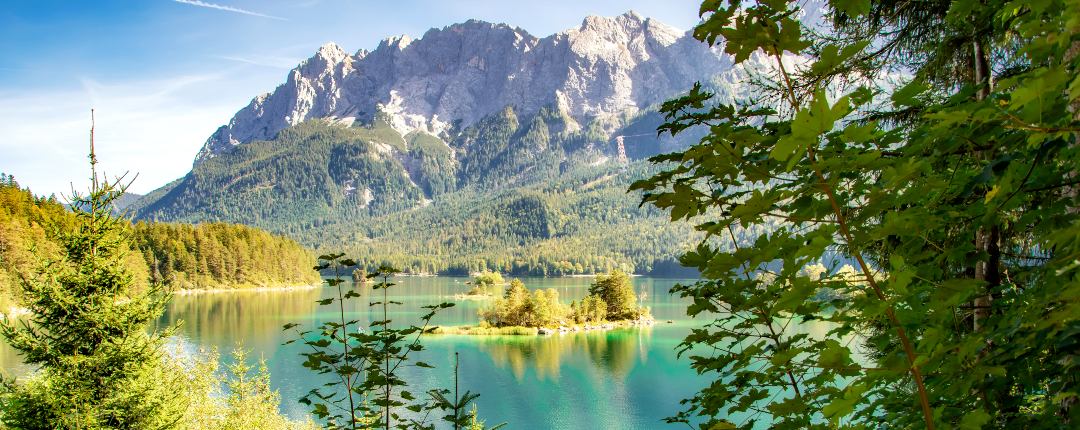
Just 60 miles from Munich, Zugspitze is the Wetterstein Mountains’ highest peak and the highest in Germany. It’s easy to reach by train, car, or a guided trip and once there you can take on a big challenge by conquering the 9718-foot-high summit, or reach it in comfort via a cogwheel railway or cable car. No matter how you get there, an awe-inspiring panorama of 400 mountain peaks in Germany, Italy, Austria, and Switzerland awaits at the top. A wide range of activities can be enjoyed too, including winter sports like skiing and snowboarding in the Zugspitze ski area. In the summit station building there’s an exhibition providing insights into the history of the cogwheel train and you’ll find several restaurants too.
Dachau Concentration Camp Memorial Site
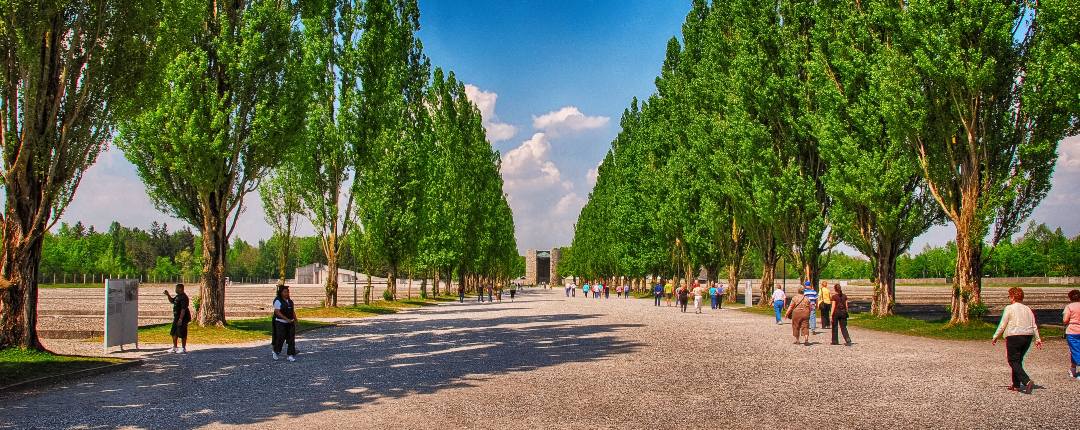
Located about 10 miles northwest of Munich, Dachau was one of the first concentration camps built by Nazi Germany. It was also the longest-running, opened from March 22, 1933, through April 29, 1945. It sits on the grounds of an abandoned munitions factory and was originally designed to imprison Hitler’s political opponents, including social democrats, communists, and various other dissidents. Over its 12 years of existence, it grew to include nearly 100 sub-camps and imprisoned more than 200,000 from across Europe while some 41,500 were killed. Liberation by U.S. forces ultimately ended the many years of atrocities. Today, visitors can view exhibits and poignant memorials honoring the lost lives, and tour historic buildings like the barracks, bunkers, and crematorium.
Regensburg
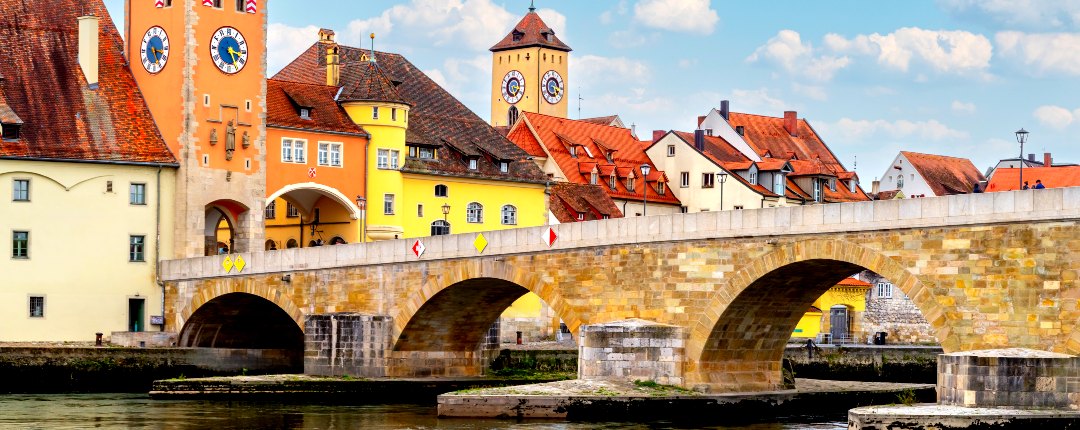
A hidden treasure in the Bavarian forest along the Danube River, Regensburg boasts an especially picturesque aesthetic. A panoramic view of the Old Town rooftops and spires can be enjoyed from the 12th-century Stone Bridge (Steinerne Brucke) spanning the Danube with 16 arches. An architectural milestone it inspired many famous bridges from the London Bridge to Prague’s Karlbridge. A city of churches, it was once the focal point from which Christianity spread via the Danube throughout Germany and into Central Europe. The early 16th-century Regensburg Cathedral is the city’s most iconic landmark and an important example of Gothic architecture in Bavaria. Be sure to explore the Hinter der Grieb, lined with 15th-century bourgeois houses that will bring you back to the Middle Ages.
Berchtesgaden & the Eagle's Nest
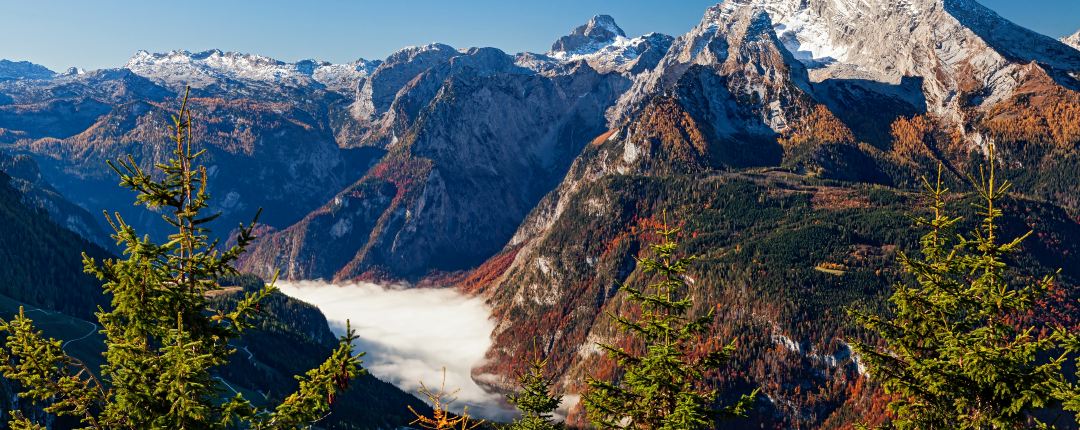
Nestled in the Bavarian Alps at 6,000 feet near the town of Berchtesgaden is Hitler’s Eagle’s Nest retreat, the Kehlsteinhaus. Set high above the clouds on the Kehlstein peak in Berchtesgaden National Park, it’s one of the few remaining monuments that still survive as a legacy of Hitler’s reign. A symbol of the power of the Nazi regime, plans for mass murder and war were made here although Hitler didn’t visit often. It’s accessed via a golden brass elevator buried in the heart of the mountain, with the sole purpose to impress. A unique feat of engineering, it can be visited on a guided tour, although the high elevation means it’s only open during the warmer months, typically from May through October.
Ingolstadt
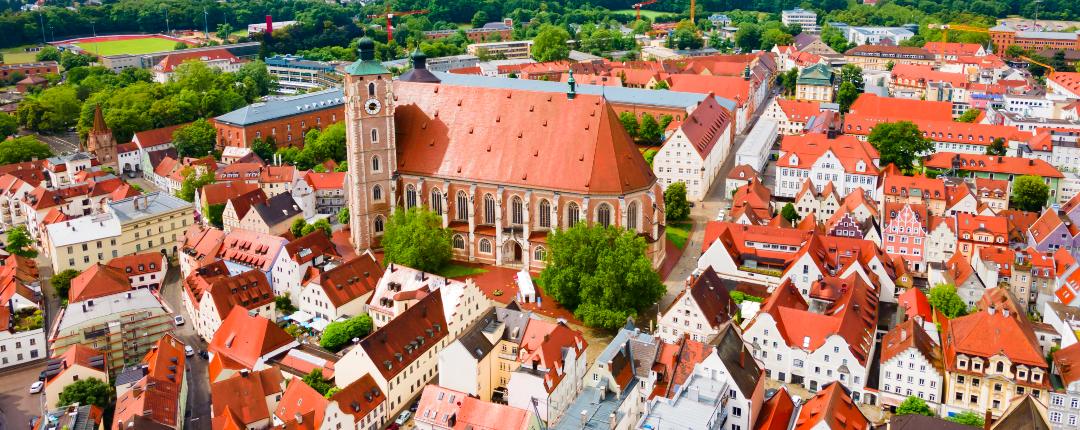
Located along the Danube less than an hour’s drive north of Munich, Ingolstadt has a medieval Old Town well worth exploring, entered by a 14th-century gate. The Gothic Liebrauenmunster was never finished due to a lack of funds, dominating the cityscape with the roof trus three times the size of Notre-Dame Cathedral in Paris. Other highlights include the magnificent late Baroque Alte Anatomie which houses the Museum of Medical History, documenting the history of medicine from antiquity through today. It includes a botanical garden with medicinal plants. The Audi Forum is a popular attraction with a new car collection and a museum featuring classic cars. A factory tour is available and there is also a venue for concerts, restaurants, and a cinema.
Tegernsee
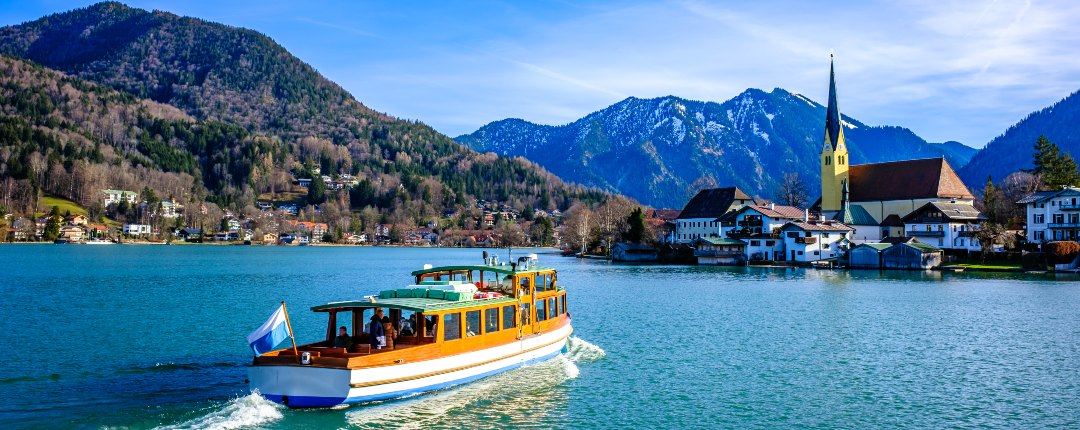
Nestled along the shores of Tegernsee Lake, surrounded by a forested valley in the Bavarian Alps, the resort town of Tegernsee is less than a 50-minute drive south of Munich. If you’re up for a hike there are many scenic trails or you can enjoy a 360-degree view of the Bavarian foothills via mountain railway from the 5650-foot-high peak of the Wallberg. It’s topped by a tiny church renowned for its incredible panoramic vista. The lake is popular for swimming, paddleboarding, sailing, and other watersports in the summer while autumn brings the stunning changing of the leaves for a colorful contrast to snowcapped mountains. Other highlights include the Olaf Gulbransson Museum with works by Norwegian artist Gulbransson and local artists.
Ready to plan your trip?
What ever you want from your dream trip, our team of
experts are ready to help.
COPYRIGHT © 2024 UNFORGETTABLE TRAVEL. ALL RIGHTS RESERVED




